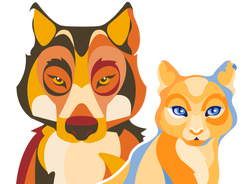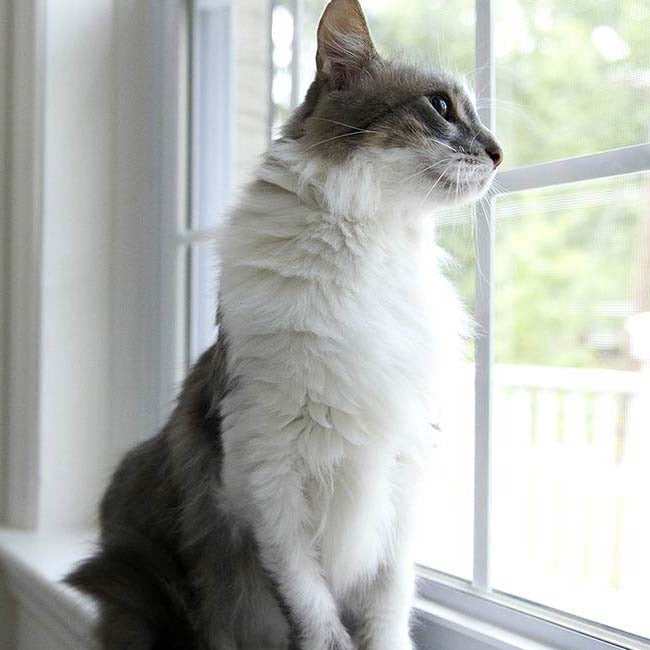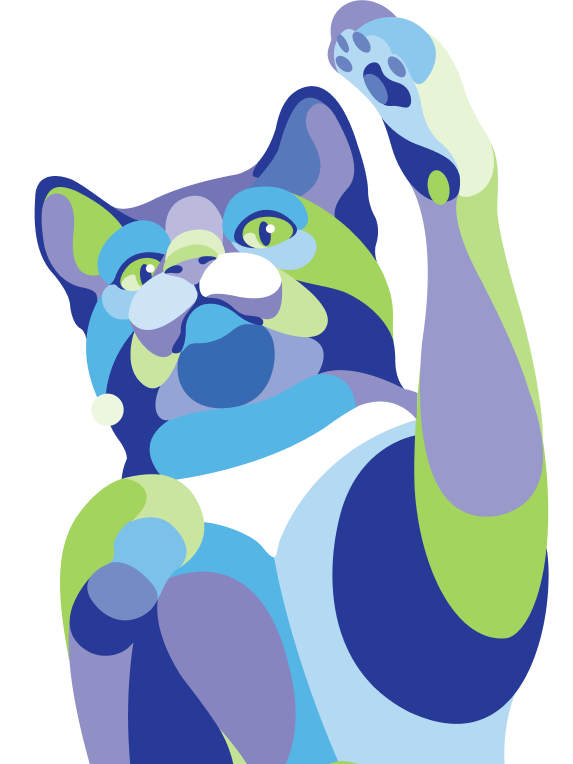In the United States, it is becoming more and more common for cats to live exclusively indoors. Not only does this protect them from the dangers of outside living such as cars, predators and disease, it also protects wild fauna from the hunting prowess of our feline companions.
Indoor only cats tend to be much less active, sleep more, and groom themselves much more than their outdoor living cousins. These life factors lend unique nutritional needs to our indoor cats.
As obligate carnivores, the digestive tract of a cat is much shorter than even a dog’s, allowing for rapid digestion of meat. Cats do not have a known nutritional requirement for fiber. However, the natural, whole prey diet of a cat would include things like fur and bones, which are indigestible and act as fiber does in the digestive system, helping it function properly. In the absence of these indigestible materials found in whole prey, wild diets, we must include fiber in our cat’s diet to promote digestive health.
Fibers are carbohydrates that are not digestible in the body. There are two types of fiber; soluble and insoluble. Soluble fiber dissolves in water. Insoluble fiber does not dissolve in water and remains intact while it moves through the digestive system. Most food fiber sources contain both soluble and insoluble fiber.
Both types of fiber can help reduce incidences of constipation and diarrhea. Soluble fiber absorbs moisture and can help reduce incidents of diarrhea. Insoluble fiber can help increase the bulk of matter found in the digestive system, helping it move through and reduce incidents of constipation.
Due to their level of inactivity, indoor only house cats are more likely to become overweight. Increasing the amount of fiber can help a cat feel more full, reducing the amount of food they consume and helping in weight management. As obligate carnivores, a diet higher in protein and fat, lower in digestible carbohydrates and higher in dietary fiber can help promote a lean, healthy weight.
One of the most common problems plaguing indoor cats are hair balls. It’s estimated an indoor cat spends up to 4 hours a day grooming itself. During this process, a cat will ingest quite a bit of hair which can ball up in the digestive tract causing digestive upset and the inevitable hair ball on your kitchen floor.
Increasing the fiber content in the diet helps to move the hair ball through the digestive tract and reduces the risk of digestive upset causing vomiting of hair balls.
To better serve the unique nutritional needs of indoor cats, Solid Gold recently launched Let’s Stay In , a new line of Indoor Cat Foods. Let’s Stay In is available in two formulations; Chicken, Lentils and Apple Recipe and Salmon, Lentils and Apple Recipe . Formulated with higher protein, fat, and fiber and of course Solid Gold’s blend of 20 antioxidant packed Super Foods, these foods are perfectly formulated to address the unique nutritional needs of indoor cats.





